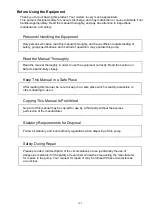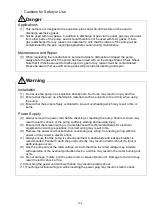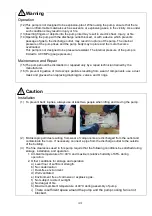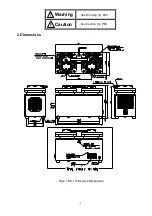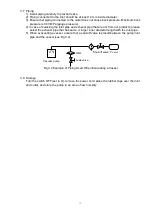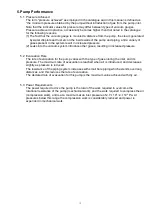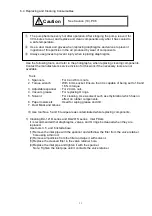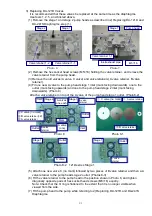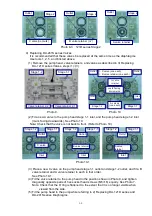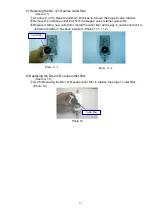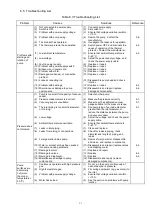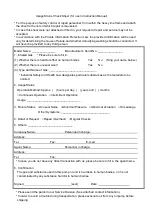
8
5. Pump Performance
5.1 Pressure Achieved
The term “pressure achieved” as employed in the catalogue and in this manual is defined as
“the minimum pressure obtained by the pump without introduction of gas from the pump inlet .
Note that the indicator values for pressure may differ between types of vacuum gauges.
Pressure achieved in practice, occasionally becomes higher than that noted in the catalogue
for the following reasons.
(1) The fact that the vacuum gauge is mounted a distance from the pump, the steam generated
by water droplets and rust etc on the inside walls of the pump and piping, and a variety of
gases present in the system result in increased pressure.
(2) Leaks into the vacuum system introduce other gases, resulting in increased pressure.
5.2 Evacuation Rate
The rate of evacuation for the pump varies with the type of gas entering the inlet, and its
pressure. The maximum rate of evacuation is reached when air is introduced, and decreases
slightly as pressure is reduced.
The resistance of the piping system increases with small bore piping which extends over long
distances, and this reduces the rate of evacuation.
The declared rate of evacuation for this pump is the maximum value achieved with dry air.
5.3 Power Requirements
The power required to drive the pump is the total of the work required to overcome the
rotational resistance of the pump (mechanical work), and the work required to compress the air
(compression work), and is at a maximum at an inlet pressure of 2.7
×
10
4
~4
×
10
4
Pa. At
pressures below this range the compression work is considerably reduced and power is
expended in mechanical work.

